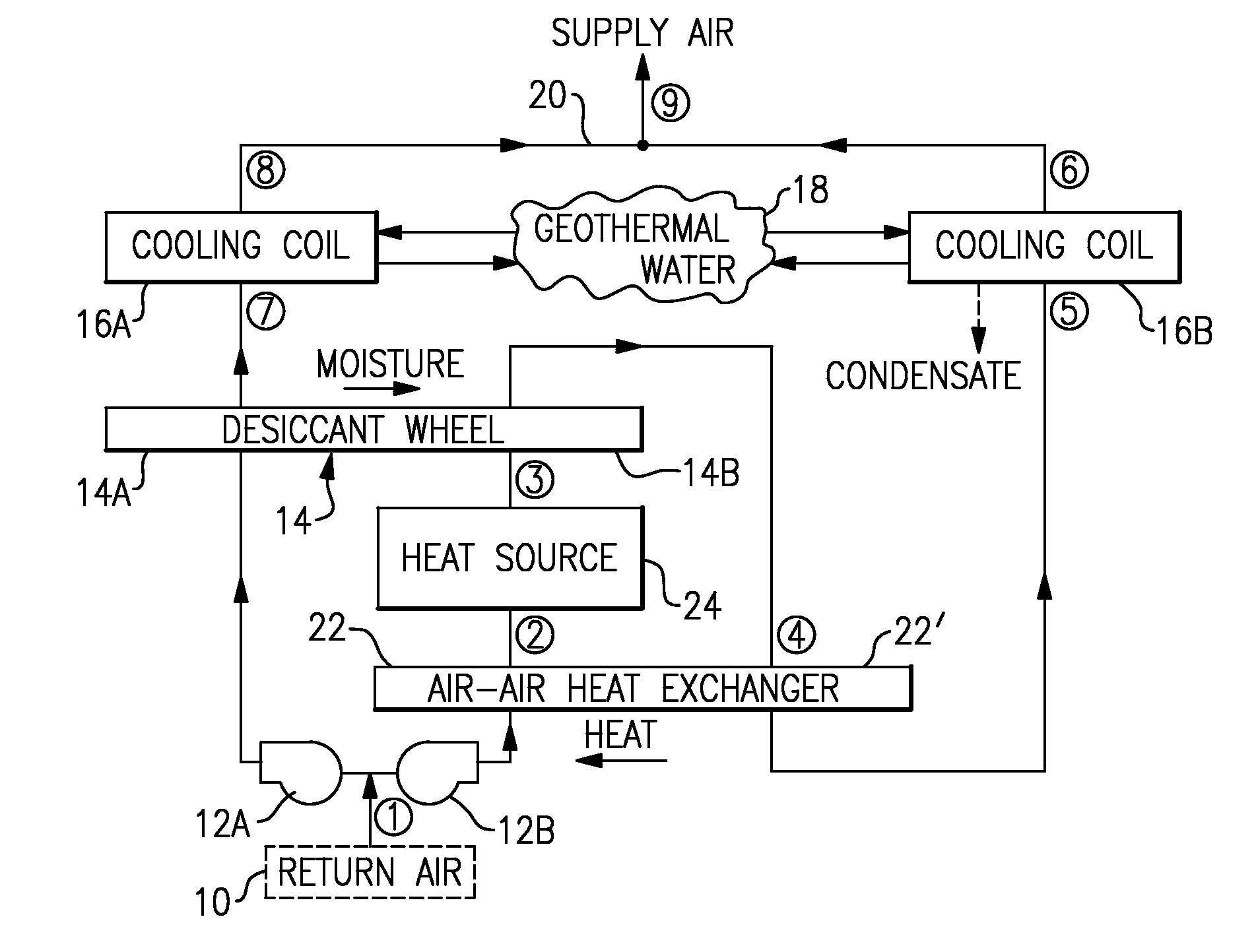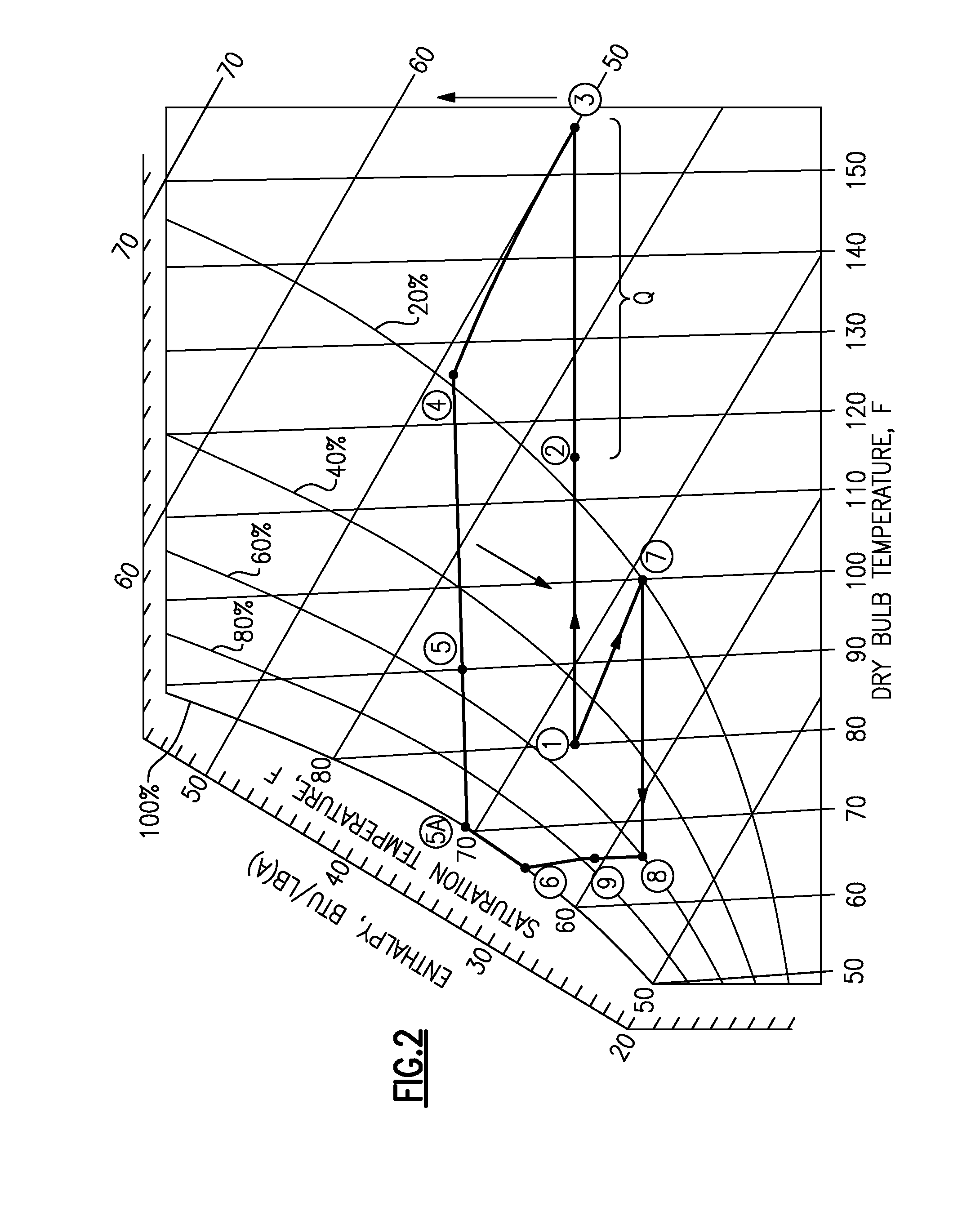Geothermal Air Conditioning with Desiccant Dehumidification
- Summary
- Abstract
- Description
- Claims
- Application Information
AI Technical Summary
Benefits of technology
Problems solved by technology
Method used
Image
Examples
Embodiment Construction
[0025]With reference to the Drawing, a geothermal and desiccant cycle air conditioning and dehumidification arrangement is shown schematically in FIG. 1. At the bottom of the drawing view, a return air duct or inlet 10 receives the warm and moist air from the room or conditioned space. The air is split into first and second air flows or courses, with a pair of blowers or fans 12A and 12B moving the air respectively along the first and second courses. The first air stream or course is shown at the left. This air stream first passes through a desiccant wheel 14, namely, through the dehumidification or drying side 14A thereof, where the desiccant materials in the wheel pick up moisture from this first air stream. The wheel 14 is rotated to convey the moisture to the second air stream where that air is heated and passes through the rotated or wet side 14B to pick up the moisture from the desiccant. This will be discussed later. The dehumidified first course air stream leaving the desicc...
PUM
 Login to View More
Login to View More Abstract
Description
Claims
Application Information
 Login to View More
Login to View More - R&D
- Intellectual Property
- Life Sciences
- Materials
- Tech Scout
- Unparalleled Data Quality
- Higher Quality Content
- 60% Fewer Hallucinations
Browse by: Latest US Patents, China's latest patents, Technical Efficacy Thesaurus, Application Domain, Technology Topic, Popular Technical Reports.
© 2025 PatSnap. All rights reserved.Legal|Privacy policy|Modern Slavery Act Transparency Statement|Sitemap|About US| Contact US: help@patsnap.com



